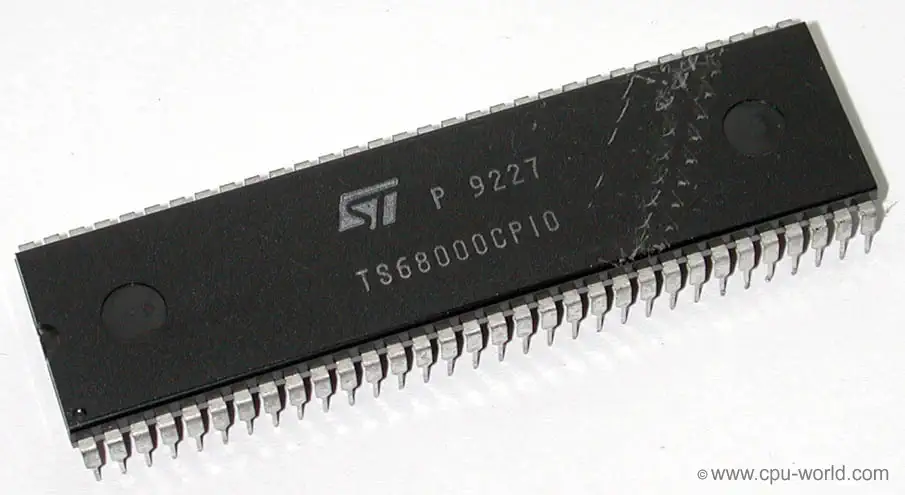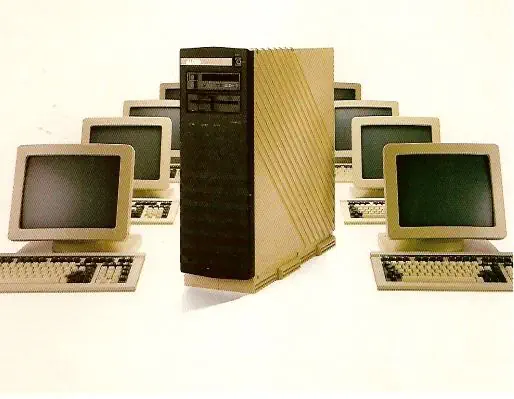The Altos 3068 multi-user Super Micro Computer
The 3068 Altos was a system based on the Motorola 68020 processor. The machine ran Unix System V or the provided Pick-OS 2.15 operating system. The system supported up to 40 separate terminals. The machine had an intelligent 8086 based file processor subsystem with four separate DMA channels for fast file processing. The machine also had up to 4 8086-based serial communciations modules each with its own 128kB of RAM.
The Altos 3068 can be considered a super-microcomputer due to the fact it was designed to support many different users at the same time. It handled up to 40 different terminals at a fraction of the cost of a similarly performing superminicomputer or mainframe.
CPU View - Motorola 68000 Family
The Motorola 68000 is a 16/32-bit microprocessor that was first released in 1979. It was widely used in computers and other electronic devices during the 1980s and early 1990s. The 68000 was known for its advanced architecture, which included a 32-bit internal bus and a 24-bit address bus, allowing it to access up to 16 megabytes of memory. This made it more powerful than many other processors of its time, such as the Intel 8086 and Zilog Z80. It was also designed to be highly modular and expandable, with a large number of on-chip and off-chip peripherals.
Some of the most famous and successful computers that used the 68000 was the Commodore Amiga and the Atari ST, both of which were popular in the home and personal computer markets. Additionally, it was also used in workstations, such as the Sun 3 and Apollo DN3000, and in a wide variety of embedded systems and industrial control systems. The 68000 was also used in the Macintosh, the first model of the Macintosh was powered by a Motorola 68000 CPU. The processor was eventually succeeded by the 68020 and 68030, which offered improved performance and additional features.
The 68000 has a 32-bit instruction set, with 32-bit registers and a 16-bit internal data bus. The address bus is 24-bit and does not use memory segmentation, making it easier to address memory. There are three ALU's (Arithmetic Logic Unit), two for calculating addresses, and one for data, and the chip has a 16-bit external address bus.
The 68000 architecture was expanded with 32-bit ALUs, and caches. Here is a list with some 680x0 versions and their major improvements:
- 68010 - Virtual memory support
- 68020 - 32-bit ALU & Instruction Cache
- 68030 - On-Chip MMU, 2x 256 byte cache
- 68040 - 2x 4K Cache, 6 stage pipeline, FPU
- 68LC040 - No Floating Point Unit (FPU)
- 68060 - 2x 8K Cache, 10 stage pipelinet

Source: WikiPedia - Motorola 6800
Source: WikiPedia - 68000 Series
RAM max: 16MB Sound Chip none Sound none Display Chip none Display Text Best Color none Graphics Text Only Sprites none System OS Pick-OS 2.15
Unix System V Storage 1.6MB FDD
Up to 3x 5.25" HDD (50, 80, or 190MB)
60MByte streaming tape drive

